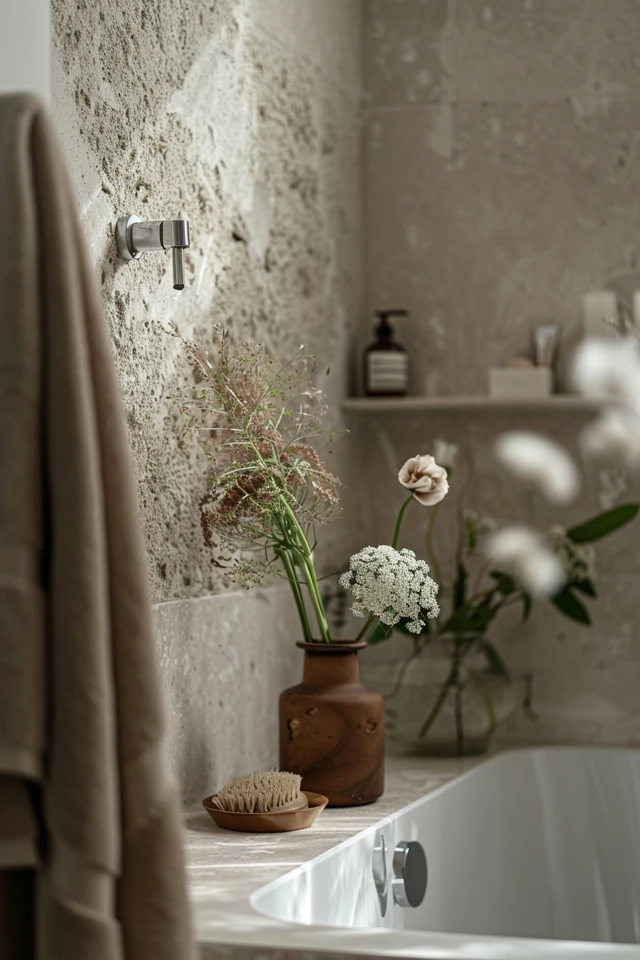Removing adhesive from shower walls can be a challenging task, but with the right methods, you can easily get rid of that sticky residue. Whether you’ve recently renovated your bathroom or accidentally spilled adhesive while hanging your shower caddy, it’s essential to know how to effectively clean your shower walls.
In this article, I will share some tried-and-tested techniques to help you tackle adhesive removal on your shower walls. From everyday household items to specialized adhesive removers, I’ll guide you through the process, ensuring your shower walls are left clean and adhesive-free.
Key Takeaways:
- Removing adhesive from shower walls can be a challenging task, but it is achievable with the right techniques.
- Household items like cooking oil, rubbing alcohol, toothpaste, and peanut butter can be effective in removing adhesive residue.
- Specialized adhesive removers like vinegar, Selleys RP7, and acetone can provide excellent results.
- Consider the material of your shower walls when choosing the appropriate adhesive removal method.
- Mechanical or thermal methods, such as scraping or using a hairdryer, can also be effective in removing stubborn adhesive.

Best Methods for Removing Adhesive from Different Surfaces
When it comes to removing adhesive from your shower walls, it’s important to consider the surface material. Different materials may require specific techniques to ensure effective adhesive removal. Here are some tips to help you remove adhesive from various surfaces:
Glass Adhesive Removal
- Start by applying a small amount of rubbing alcohol to a soft cloth.
- Gently rub the adhesive in circular motions until it starts to dissolve.
- For stubborn adhesive, use a plastic scraper to carefully scrape it off the glass surface.
- Wipe the area clean with a damp cloth to remove any remaining residue.
Plastic Adhesive Removal
- Begin by using a hairdryer to warm up the adhesive. This will soften it and make it easier to remove.
- Gently scrape off the adhesive using a plastic scraper or credit card.
- If there is any residue left, apply a small amount of dish soap to a cloth and rub the area until it is clean.

Metal Adhesive Removal
- Use a heat gun or hairdryer to warm up the adhesive on the metal surface.
- Once the adhesive has softened, gently scrape it off using a metal putty knife or scraper.
- For any remaining residue, apply a metal cleaner or rubbing alcohol to a cloth and wipe the area clean.
Wood Adhesive Removal
- Start by using a hairdryer to warm up the adhesive on the wood surface. Be careful not to heat it too much as it may damage the wood.
- Gently scrape off the adhesive using a wooden stick or plastic scraper to avoid scratching the wood.
- If there are any leftover traces of adhesive, use a mild wood cleaner and a soft cloth to clean the area.
Remember to test any adhesive remover or cleaning solution on a small, inconspicuous area before applying it to the entire surface. This will help ensure that it doesn’t cause any damage or discoloration. With the right methods and a little patience, you can successfully remove adhesive from your shower walls without a hassle.

Conclusion
Removing adhesive from shower walls may initially seem like a daunting task, but fear not! With the right techniques and a little bit of elbow grease, you can easily achieve a clean and adhesive-free shower. In Section 1, we discussed various methods for tackling this sticky situation, and now it’s time to recap the key takeaways.
First and foremost, it’s important to choose the right method based on the material of your shower walls. Whether you have glass, plastic, metal, or wood, there are specific tips and tricks to effectively remove adhesive without causing damage.
We explored a range of methods, such as using common household items like cooking oil, rubbing alcohol, toothpaste, and even peanut butter. Each of these items possesses unique properties that can help dissolve the sticky residue and make cleaning a breeze.
We also mentioned the effectiveness of vinegar, Selleys RP7, and acetone for more stubborn adhesives, as well as mechanical or thermal methods for extra tough situations. By carefully considering the material of your shower walls and choosing the appropriate method, you can achieve excellent results.
To sum it all up, remember that easy shower wall cleaning is possible when armed with the right knowledge. Follow our tips for removing adhesive by referencing Section 1, choose the method best suited for your shower walls, and voila! You’ll have sparkling clean walls free from any sticky remnants.

